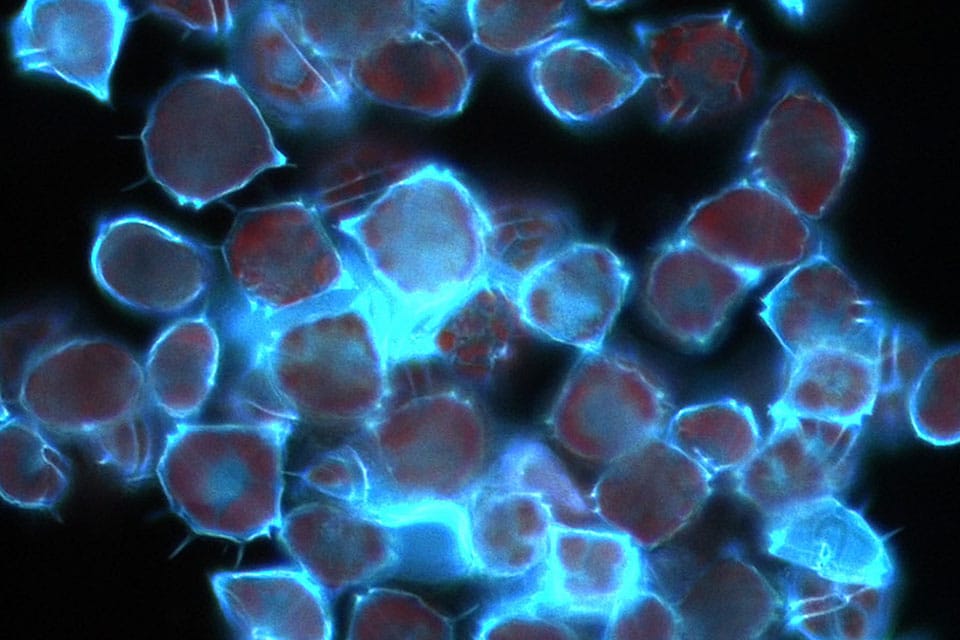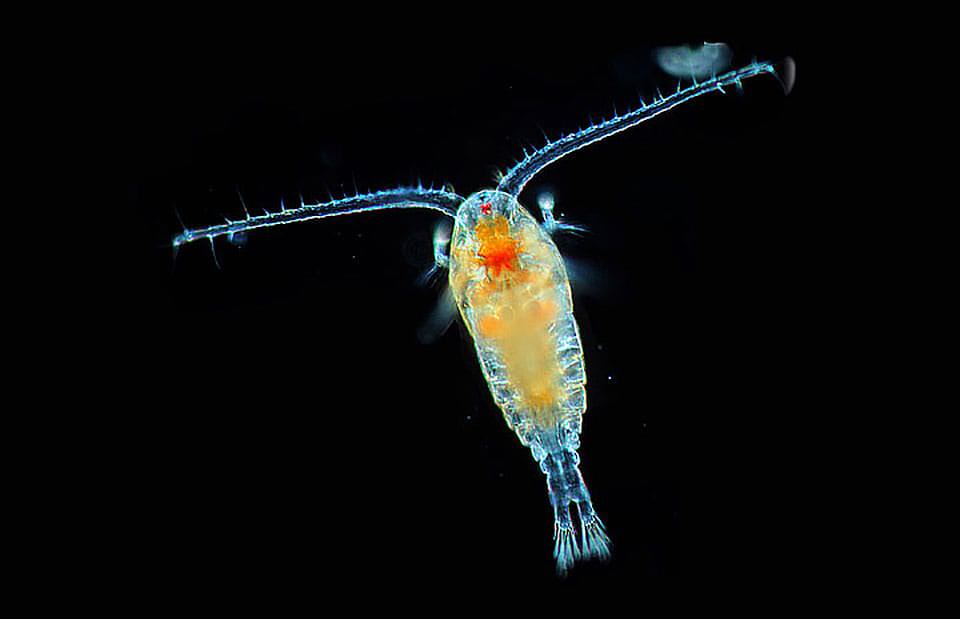NOAA Facts: What Are Plankton?
The word “plankton” comes from the Greek for “drifter” or “wanderer.” An organism is considered plankton if it is carried by tides and currents, and cannot swim well enough to move against these forces. Some plankton drift this way for their entire life cycle. Others are only classified as plankton when they are young, but they eventually grow large enough to swim against the currents. Plankton are usually microscopic, often less than one inch in length, but they also include larger species like some crustaceans and jellyfish.
Scientists classify plankton in several ways, including by size, type, and how long they spend drifting. But the most basic categories divide plankton into two groups: phytoplankton (plants) and zooplankton (animals).

A microscopy image of Protoperidinium quinquecorne enhanced with a fluorescent dye. The chlorophyll pigment is shown in red. This is one example of thousands of types of phytoplankton (NOAA)
Phytoplankton are microscopic plants, but they play a huge role in the marine food web. Like plants on land, phytoplankton perform photosynthesis to convert the sun’s rays into energy to support them, and they take in carbon dioxide and produce oxygen. Because they need the sun’s energy, phytoplankton are found near the water’s surface.

A copepod (shown here) is a type of zooplankton, a planktonic crustacean distantly related to shrimp and crabs. Copepods are one of the most common and easily recognized types of zooplankton, found in almost every ocean, sea, and freshwater habitat, even in underground caverns. (NOAA)
Zooplankton include microscopic animals (krill, sea snails, pelagic worms, etc.), the young of larger invertebrates and fish, and weak swimmers like jellyfish. Most zooplankton eat phytoplankton, and most are, in turn, eaten by larger animals (or by each other). Krill may be the most well-known type of zooplankton; they are a major component of the diet of humpback, right, and blue whales. During the daylight hours, zooplankton generally drift in deeper waters to avoid predators. But at night, these microscopic creatures venture up to the surface to feed on phytoplankton. This process is considered the largest migration on Earth; so many animals make this journey that it can be observed from space.
Plankton are incredibly important to the ocean ecosystem, and very sensitive to changes in their environment, including in the temperature, salinity, pH level, and nutrient concentration of the water. When there are too many of certain nutrients in the water, for instance, harmful algal blooms like red tides are the result. Because many zooplankton species eat phytoplankton, shifts in timing or abundance of phytoplankton can quickly affect zooplankton populations, which then affects species along the food chain. Researchers are studying how climate change affects plankton, from the timing of population changes to the hardening of copepod shells, and how those effects ripple through ecosystems.
This article appears courtesy of NOAA's National Ocean Service and may be found in its original form here.
